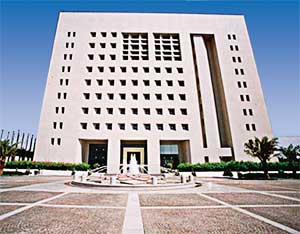Oil and gas in the capitals
The Arab Gas Pipeline Project is a cooperative success
In the Middle East...it is all about gas! Throughout the Middle East, if the business is not about exploring, producing and exporting natural gas, it must be about importing it. If oil divided the Arab world and caused political instability, natural gas is now unifying the Arab world, increasing its integration and leading to prosperity. The Arab Gas Pipeline Project has done what Arab leaders have failed to do in recent decades. To date, the pipeline is among the most successful joint projects by any economic and political standards. Another set of pipelines, including the Dolphin project, is making its way through the sands of the Arabian Peninsula, contributing to the integration of the Gulf countries. The Arab Gas Pipeline Project. Historically, most Arab cooperation in pipelines has centered on building pipelines across a few countries to export oil from the Gulf and northern Iraq. Most of these pipelines were either shut down or blown out by transit countries. One of the reasons for the failure of cooperation in these pipelines is that local populations in the transit countries have not benefited from them. Transit fees were relatively small and went to the ruling parties. There was no public incentive to protect the pipelines or even support the building of them. What distinguishes the Arab Gas Pipeline from other Arab joint ventures in petroleum projects is that it is the first joint project that focuses on domestic consumption. Unlike pipelines that are intended for exports, the livelihood of the populations in the transit countries depends on this new line. This gas pipeline contributes to economic property and political stability. Great benefits. The project, with an estimated cost of $1.2 billion, involves building a pipeline that enables Egypt to export its natural gas from fields in the Mediterranean to Jordan, Syria and Lebanon. These countries suffer from shortages of gas at a time when demand for gas is expected to grow rapidly in the next two decades. It will also enable Egypt to export gas to Turkey, Cypress and Greece. Once completed, it will also connect to the European gas pipeline system. While Egypt will guarantee a market for its gas, Jordan, one of the poorest Arab countries in energy resources, will enjoy steady supplies of gas for its utilities and factories. In addition, Jordan will earn transit royalties, once the Egyptian gas reaches Europe. Studies indicate that Egyptian gas will lower Jordan’s imports of oil and create savings in excess of $50 million annually. Syria will gain similar benefits, especially if it becomes a net importer of crude oil within the next few years. In recent years, several natural gas deposits were discovered in central Syria. If this trend of discoveries continues, Syria’s benefits from the pipeline might multiply: it can export its gas through the pipeline to Europe. The project is almost completed. The Arab Gas Pipeline project was divided into three phases along the political borders of Egypt, Jordan and Syria. Three companies were set up to build and operate each phase. A joint commission was established to oversee the companies and the future directions of the pipeline. On July 28, 2003, Egyptian President Hosni Mubarak and Jordan’s King Abdullah inaugurated the project’s first phase, in which Egyptian gas was delivered into the Aqaba Thermal Power Station. The station is Jordan’s largest, and it provides 50% of the country’s electricity. During the first phase, Jordan will receive 1 Bcm, annually. However, the pipeline capacity is ten times that volume.
Phase I included the construction of 270 km (168 mi) of pipelines across the Sinai desert. It also included a 16-km (9.9-mi) underwater pipeline between Taba and Aqaba, at water depths up to 850 m (2,789 ft). Total cost of Phase I was around $200 million, of which 75% was financed by Kuwait Fund for Economic Development, and The Arab Fund for Economic and Social Development. Phase II was completed in December 2005 at a cost of $300 million. It entailed the construction of a 390-km (242-mi) pipeline from Aqaba in the south to the Rihab power station in northern Jordan. The power station is 24 km (15 mi) south of the Syrian border. Currently, the Khirbet Al Samra and Al Hussein thermal power stations in Zarqa are running on Egyptian gas. A consortium of Egyptian and Jordanian banks, in addition to the European Investment bank, has participated in financing this phase. Most of the third phase, which involves 600 km (373 mi) of pipelines, has been completed and will be commissioned in 2008. Phase III is composed of three stages. Stage 1 includes the building of a 324-km (201-mi) pipeline from Rihab in Jordan to Homs in Syria. Then, the pipeline will split west and north. Stage 2 includes extending the pipeline westward to the Syrian port of Banyas on the Mediterranean and to the Zahrani Refinery in Lebanon. Future phases will extend the line to Cypress. Stage 3 of Phase III includes extending the pipeline northward to the Turkish border. Future phases will extend the pipeline through Turkey and will connect it with the European pipeline system. The Islamic Development Bank participated in financing this phase, which will cost more than $160 million. In the Middle East, things start in Egypt and end up in Syria...even natural gas.
|
|||||||||||||





